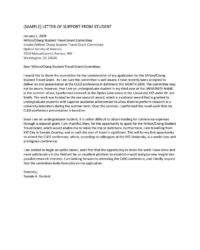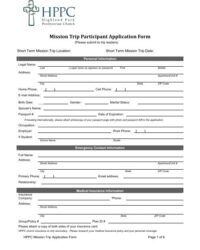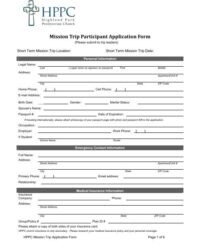Utilizing such a structure offers several advantages. It streamlines the application process, saving applicants time and effort. Clear guidelines within the format ensure all necessary information is provided, increasing the likelihood of a successful outcome. Furthermore, a standardized approach allows for objective comparisons between different applications, promoting fairness and transparency in funding decisions.
This resource provides a foundation for understanding the key components and advantages of organized funding requests for travel. The following sections will delve deeper into specific elements, offering practical guidance and examples for creating and utilizing these valuable tools effectively.
Key Components of a Travel Funding Request
Effective applications for travel funding consistently incorporate several key elements. These components provide a comprehensive overview of the proposed travel, justifying the need for financial support and enabling informed decision-making by reviewers.
1. Trip Purpose/Objectives: A clear and concise explanation of the reason for travel, including specific goals, expected outcomes, and relevance to the applicant’s field of study or professional development.
2. Destination and Duration: Specific location(s) and the total length of the trip, including precise dates.
3. Detailed Budget: A comprehensive breakdown of anticipated expenses, including transportation, accommodation, meals, conference fees, visa costs, and other relevant expenditures. Supporting documentation, such as quotes or estimates, may be required.
4. Justification of Expenses: A rationale for each budgeted item, explaining its necessity and relevance to the trip’s objectives. This section should demonstrate cost-effectiveness and responsible financial planning.
5. Applicant Background/Qualifications: A brief summary of the applicant’s relevant experience, skills, and qualifications, demonstrating their suitability for the proposed travel and the potential benefits to be gained.
6. Supporting Documents: Any additional materials that strengthen the application, such as letters of invitation, acceptance letters from conferences, or endorsements from supervisors or mentors.
A well-structured application facilitates a clear understanding of the proposed travel, its associated costs, and the potential benefits. Providing complete and accurate information in each of these key areas significantly increases the likelihood of securing necessary funding.
How to Create a Travel Funding Application Template
Developing a standardized template ensures consistency and efficiency in requesting travel funds. The following steps outline the process of creating a comprehensive and effective template.
1: Define the Purpose: Determine the specific types of travel the template will cover (e.g., conference attendance, research trips, field work). This clarifies the scope and ensures relevance to the target audience.
2: Outline Essential Sections: Include dedicated sections for trip objectives, destination/duration, detailed budget, expense justification, applicant background, and supporting documents. These sections provide a structured framework for applicants to follow.
3: Develop Clear Instructions: Provide concise and unambiguous instructions for completing each section. Specify required information, preferred formats, and any supporting documentation needed. This minimizes ambiguity and ensures complete applications.
4: Incorporate Formatting Guidelines: Establish consistent formatting guidelines for font, spacing, margins, and headings. This enhances readability and professionalism.
5: Designate Review and Approval Processes: Outline the workflow for reviewing and approving applications. This ensures transparency and accountability in the funding allocation process.
6: Test and Refine: Pilot test the template with a small group and gather feedback. Revise and refine the template based on user experience to improve clarity and usability.
A well-designed template streamlines the application process, ensuring all essential information is captured and presented clearly. This facilitates efficient review and contributes to equitable funding decisions. Regular review and updates maintain the template’s relevance and effectiveness over time.
Standardized structures for requesting travel funding offer significant advantages to both applicants and granting bodies. These frameworks ensure comprehensive and consistent information, streamlining the application review process and promoting equitable funding decisions. Key components include clearly defined trip objectives, detailed budget breakdowns with justifications, and relevant applicant qualifications. Careful template design, incorporating clear instructions and formatting guidelines, further enhances usability and efficiency.
Effective utilization of these resources contributes to a more transparent and efficient funding landscape. Organizations and individuals seeking travel support are encouraged to adopt or develop structured application processes to maximize their chances of securing necessary funds and contribute to a more streamlined and equitable system for all stakeholders.


